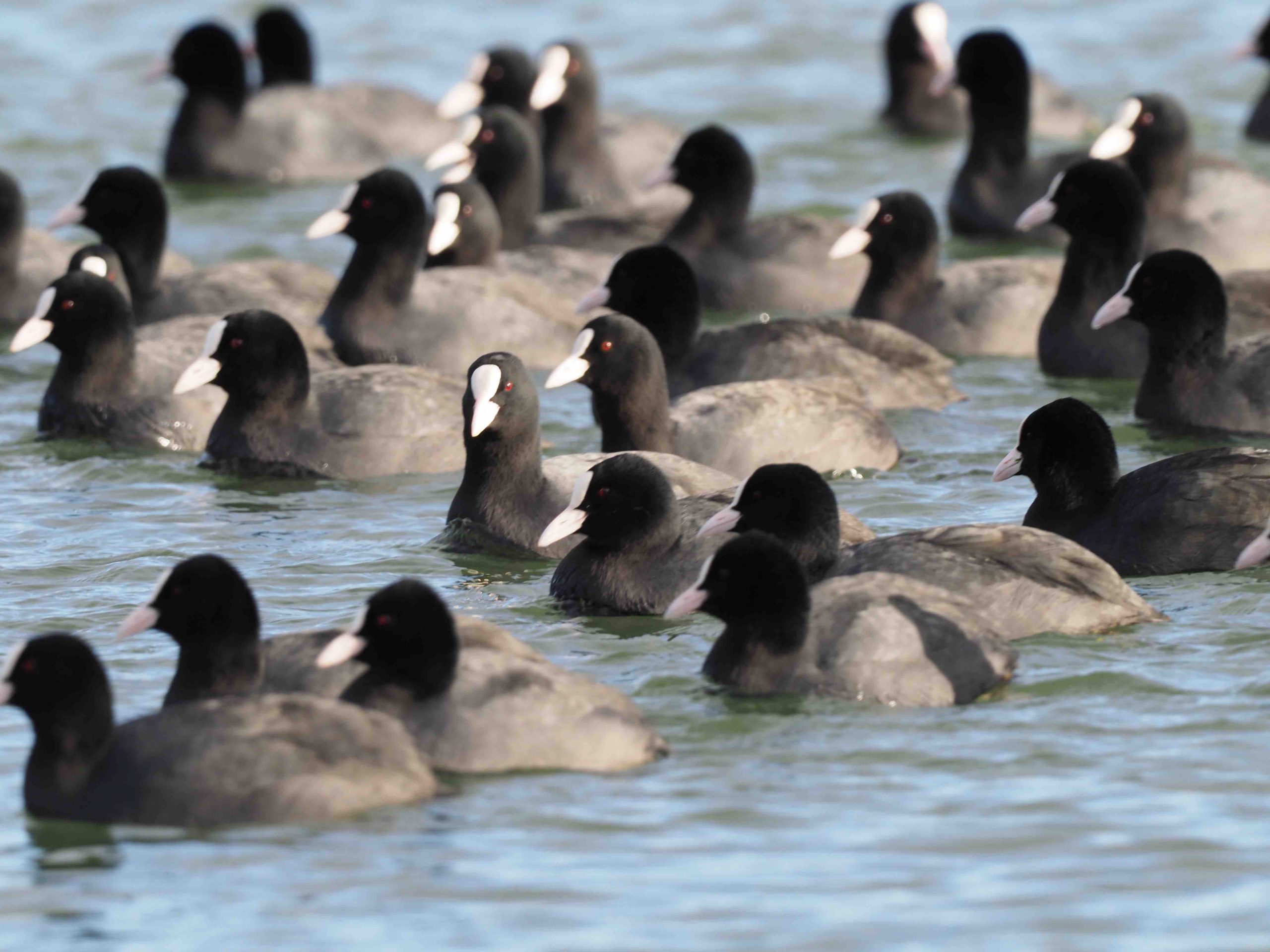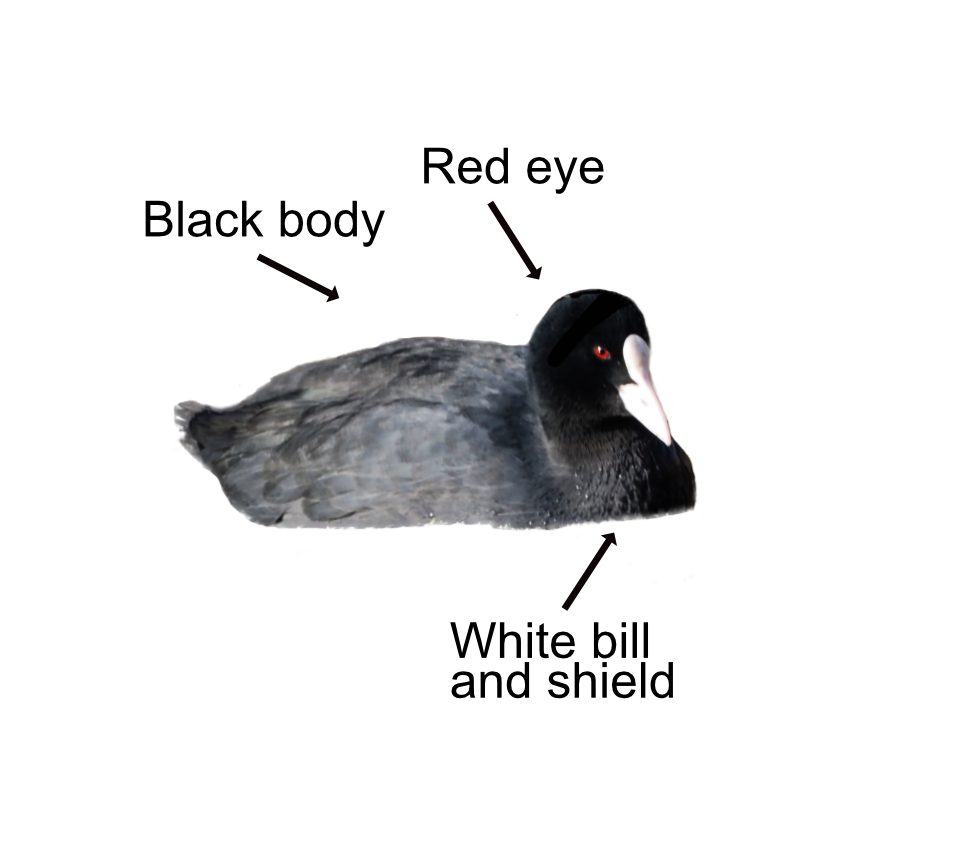
The Coot is the quarrelsome kickboxing champ of the water. They can be found on gravel pits, ponds, lakes, and reservoirs in Europe, Asia, Australia, New Zealand and parts of North Africa.
Coots are slate black with a white frontal shield on their head and white bill. They have grey legs with partly webbed toes for swimming and diving. They swim with a nodding head motion. In flight, there is a pale bar along the trailing edge of the wing, though it is hard to see. More obvious is their feet sticking a long way out at the back. The Coot is reluctant to fly and runs across the water surface, with much splashing, when taking off. They are flightless for a brief period from June to September when they moult. The Coot's call is the origin of the bird's name. It is a brief note, a little like a trumpet, that can sound "kroot!"
They often dive for food and feed on water snails, dragonflies, moths, beetles, aquatic vegetation and grass. They are a bit of an aquatic scavenger, picking up food disturbed by other birds.

Coots engage in territorial fights during the breeding season (which starts at the end of April), kickboxing and wing flapping against their opponents, often issuing a very percussive "poot!" They generally nest close to other Coots, which is one reason why all the fighting kicks off. Their nest is built among reeds or aquatic vegetation and is made of plant leaves and stems. The 6-10 eggs are looked after by both parents and hatch after 21 days. Mum looks after the newly hatched young for the first week while dad gets the food. The parents then divide the brood between them and feed the young for a further 30 days. The chicks are covered with a black down with orange-red bits on their head, looking like mini punk goths. The youngsters can fly after 55 days. Coot parents are generally pretty tough and can be a bit nasty to their chicks, even killing them, if food is short.
They are a sedentary resident in Britain with 30,000 breeding pairs spread mainly across lowland areas. Northern European birds boost numbers to 200,000 in the winter when they often gather in large flocks on lakes or reservoirs. They have benefitted from reservoir creation. The oldest ringed Coot lived to 18 years. Not bad for a feisty fighter. Their Latin name is 'fulica atra' where 'fulica' means 'coot' and 'atra' means 'black'. It sounds a bit like 'fully attack ya' - and kick your head in.